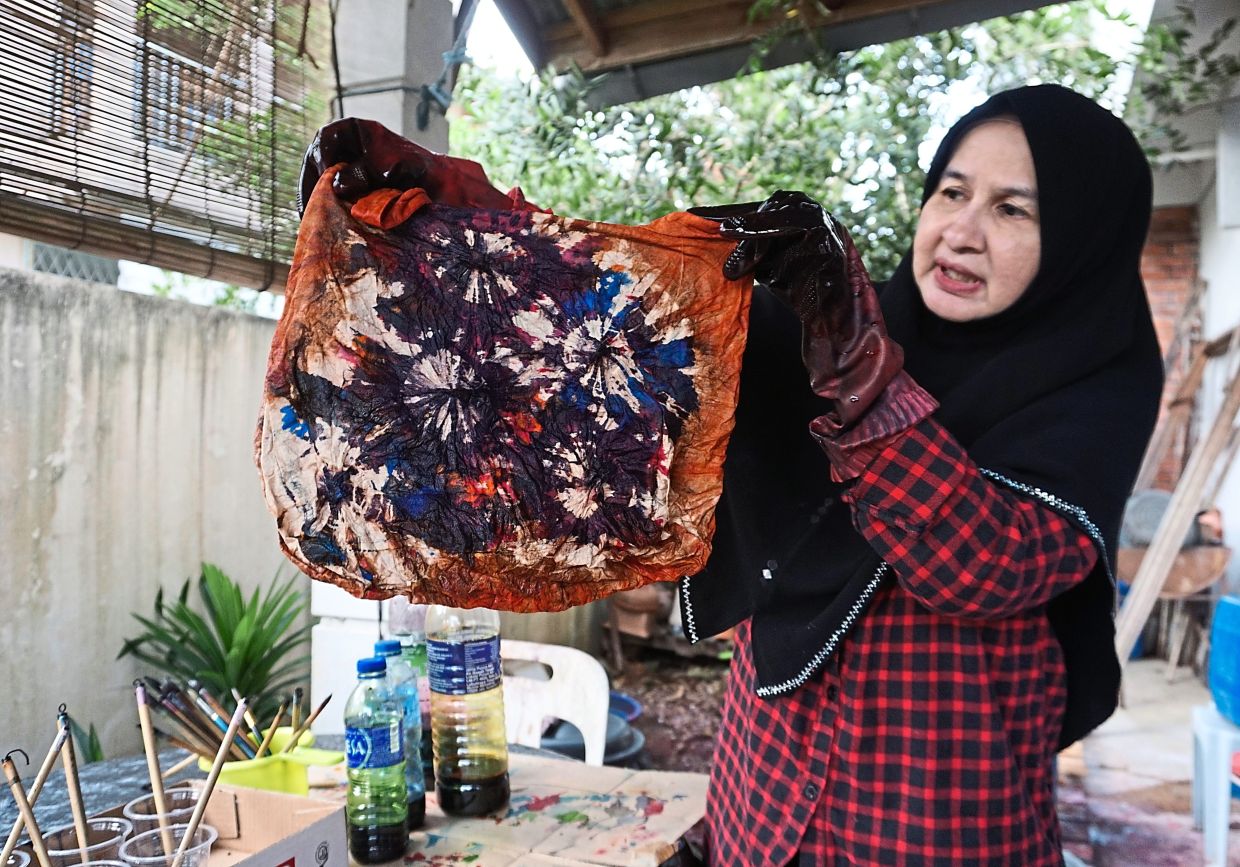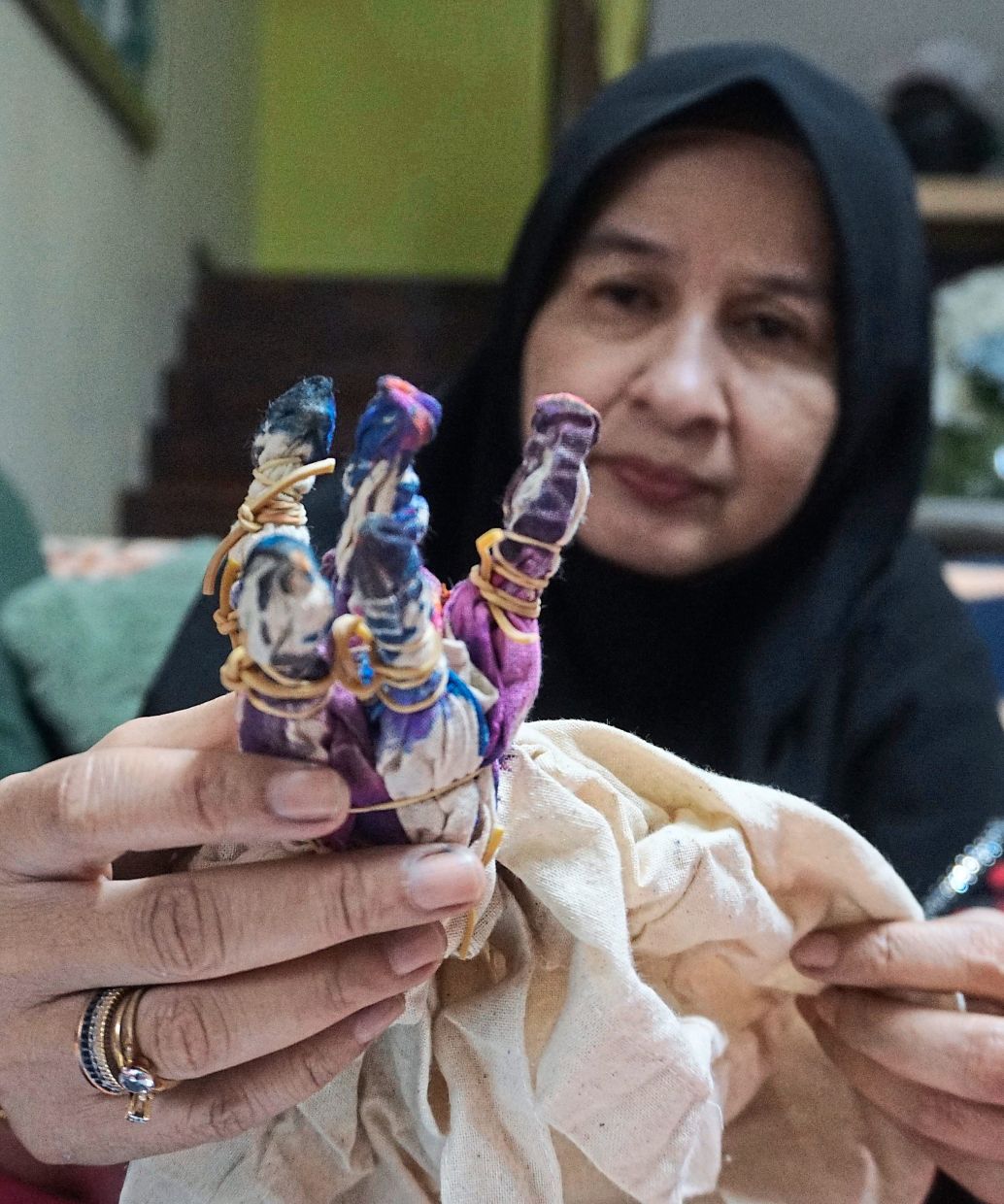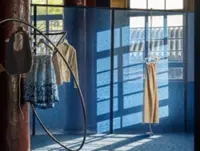Kaftans, bearing unique patterns, among the finished products in addition to textiles that Noor Atikah sells in Kota Baru.
Former teacher Noor Atikah Abdul Ghani, who is approaching 55, did not expect to be earning a tidy sum from the tie-dye technique (tying and dipping into fabric dyes) post-retirement.
She learnt the fabric design technique while studying at Mara Institute of Technology (now Universiti Teknologi Mara or UiTM) decades ago.
Noor Atikah said she started actively producing various tie-dye products last year after retiring early due to health reasons.
Speaking to Bernama in Kota Baru, Kelantan, Noor Atikah explained that the tie-dye technique was an “ancient art” thought to have started through the use of plant juices in fifth-century China and Peru.
It enjoyed worldwide revival in the 1960s when free expression in art was encouraged.
Noor Atikah enjoys making trendy designs by folding, pleating, twisting, knotting or crumpling fabrics before dipping them in dye.
“It’s a colour-resist method (colour-blocking) process where areas of fabric are tied (just as how wax is used to block out colour during batik cloth dyeing) using string, twist cords or rubber band or stitched/sewn up.
“The fabric is then soaked in dye as a part of creating intricate patterns.
“The bound area will absorb the dye while the area that is tied or corded will resist the dye and remain white,” said the former art education teacher.
The art and design diploma holder said she used three techniques of sewing, tying and folding to produce tie-dye products.
“The sewing, tying and folding techniques will prevent the colour from being absorbed and create patterns on the fabric.
“All tie-dye patterns produced are not the same because they differ according to (a person’s) creativity,” she said.
As an active tie-dye entrepreneur in Kelantan, Noor Atikah said her handmade fabric products were getting increasingly popular because the pattern produced by the technique was different from painted batik.
She said tie-dye fabric was becoming an alternative to painted batik as textile yardage to design bespoke batik shirts.
“Currently, I produce more tie-dyed textile, which is sold at around RM100 to RM150 per metre.
“However, if customers want finished products such as tote bags, kaftan, or casual shirts, I can also make them,” she said.







